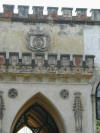Stephanus Sandor de Slavnicza
Father of Anna Sandor de Szlavnicza and husband of Mária Sandor de Szlavnicza born Marko
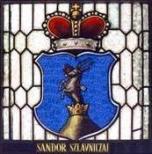 From the will of the noble Lord the Lutheran Augsburg Confession of faith, Illustrissimus Dominus Stephanus Sandor de Szlavnicza compossessor, was born in the 1802, his wife Maria Sandor de Szlavnicza genus Markó was of the Catholic faith. Their wedding was a witness of the bride contracting judge aristocrat Josephus Schurmann and witness the groom milord nobleman Carolus Vály (his wife Anna Mednyánszky) compossessor. The daughter of the spouses was Illustrissima Domina Anna Sandor de Szlavnicza married Ondrejkovics. Her husband was District notary in the village Dolné Držkovce and later in the Šimonovany Dominus Stephanus I. Ondrejkovics. Maria Sandor de Szlavnicza genus Marko was born in the year 1828 (†10.03.1907 in Malé Bielice). Illustrissima Domina Anna Sandor de Szlavnicza married Ondrejkovics was born in the year 1861 at Tvrdomestice No 23. Her godparents were milady Caroline Pirott and milord Josephus Mihalovics, compossessor. Baptizing priest was Vilhelmus Szecsányi. District notary Stephanus I. Ondrejkovics and his wife
From the will of the noble Lord the Lutheran Augsburg Confession of faith, Illustrissimus Dominus Stephanus Sandor de Szlavnicza compossessor, was born in the 1802, his wife Maria Sandor de Szlavnicza genus Markó was of the Catholic faith. Their wedding was a witness of the bride contracting judge aristocrat Josephus Schurmann and witness the groom milord nobleman Carolus Vály (his wife Anna Mednyánszky) compossessor. The daughter of the spouses was Illustrissima Domina Anna Sandor de Szlavnicza married Ondrejkovics. Her husband was District notary in the village Dolné Držkovce and later in the Šimonovany Dominus Stephanus I. Ondrejkovics. Maria Sandor de Szlavnicza genus Marko was born in the year 1828 (†10.03.1907 in Malé Bielice). Illustrissima Domina Anna Sandor de Szlavnicza married Ondrejkovics was born in the year 1861 at Tvrdomestice No 23. Her godparents were milady Caroline Pirott and milord Josephus Mihalovics, compossessor. Baptizing priest was Vilhelmus Szecsányi. District notary Stephanus I. Ondrejkovics and his wife
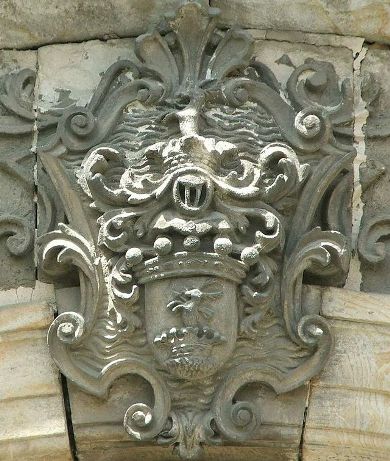
Illustrissima Domina Anna Sandor de Szlavnicza had sons administrator teacher Stephanus II. Ondrejkovics, District Chief Dr. Aladár I. Ondrejkovics - Sandor de Szlavnicza (wife Anna Török and their daughters Lady Gizelle Kerney and Lady Kamila Csúzy), Ladislaus Ondrejkovics, Joanes Ondrejkovics †1914 fell in Belarus, Joseph Ondrejkovics fell †1916 ? Ludovít Ondrejkovič declared dead in †1917, Anton Ondrejkovič fell †1917, Titus Ondrejkovič fell in †1916 ? and District notary Vojtech Ondrejkovič. Administrator teacher Stephanus II. Ondrejkovics and his wife Maria Turba had sons
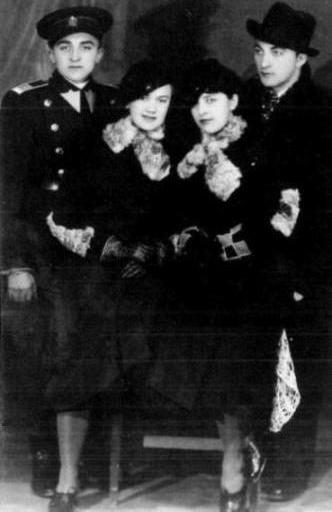
Grandchildren of Sp. Domina Anna Sandor de Szlavnicza: Aspirant Aladár II Ondrejkovič Freiherr Sandor de Szlavnicza, Edith Ondrejkovič merried Vrbacká, Magdalena married Suchánková and confidential clerk Tibor Ondrejkovič.
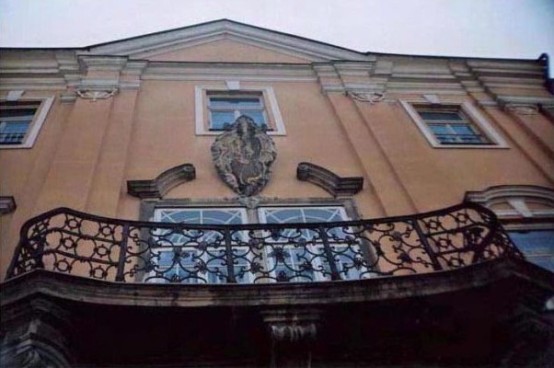
Trenčín County. The seat of Vice-Comes Gaspar Sandor de Szlavnicza on the facade with the coat of arms of the Sandor de Szlavnicza family in the center of Trenčín. This county palace also housed the Comitatus Trenchininiensis Jurassor Stephanus Sandor de Szlavnicza, father-in-law of the District Notary Stephan I. Ondrejkovič.
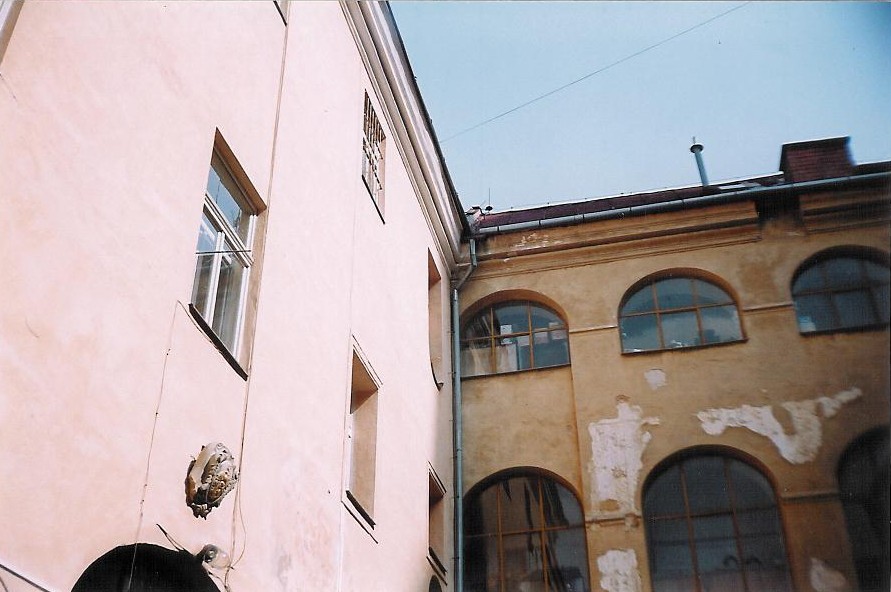
The courtyard of the palace, the seat of several vicecomes of family Sandor de Szlavnicza with small coat of arms of family Sandor de Szlavnicza in the city of Trencin. Grandfather of administrator teacher Stephan II. Ondrejkovič Comitatus Jurassor Spectabilis Dominus Stephanus Sandor de Szlavnicza worked in the office of Trencin County to the late 19th century.

The reputation of the village Slávnica: King Emeric (Emericus, Imre), who reigned in the thirteenth century (1174-1204), held a great hunt, which participated personally. During hunting enraged wounded deer fell on the king. King saved from certain death comebacks Drover, who shot a deer last moment of his bow an arrow. Grateful king reward honcho promoted to yeoman status and donated part of his land and forests, which today include Slávnica land area and Pominovac. Hunter named Slávnický, you have to squire stood on land donated house. All the assets of a given field of oxen twins, twins - boys and self-made plow, they said twins bring good luck. His servants the time also began to build houses and so founded the village, which was named after the founder of Slávnica. Further dates that for unknown reasons the descendants Slávnický (Szlavniczai) changed the name to Sandor - in their coat of arms deer.
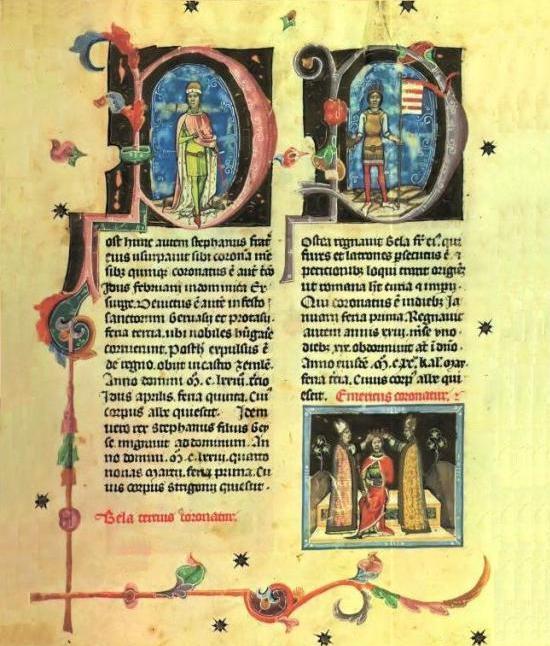
King of the Hungary and Croatia Emeric (* 1174 † 1204) son of Bela III. was crowned in May 16, 1182.
The first known members of the Ghyczy family are mentioned after 1244 as the owners of the village of Gic in the Veszprém county, from which they derived their name. From the 14th century the village of Malé Chyndice belonged to the estate of Jelenec in the Nitra county.
The Roman-German emperor and Czech king Charles IV had an onyx goblet resembling the Holy Grail made. It is located in the treasure of St. Vitus Cathedral in Prague. Longinus\' copy, which is today in the Imperial Jewelery in Vienna, was also held by Charles IV. He always had it exhibited during the Easter holidays in the Chapel of the Corpus Christi and the Blood on today\'s Charles Square in Prague.
The Dragon Order was founded on 12 December 1408 by the younger son of Charles IV, King Sigismund of Luxembourg of Hungary, and his wife Barbora Celjská as a secular knightly Dragon Society (Latin Societas draconis) modeled on the Order of St. George the Dragon Slayer (founded 1318). The transcript of the statutes was preserved from 1707. Its mission was to fight against the Turks and protect Christianity, its establishment was also a political step against the military power of the Hussites. The monarch "rewarded" loyal nobles with membership beyond the borders. Knights enjoyed popularity and the Dragon Order was one of the most important knight orders. Over time, it turned into a representative and exclusive association of meaning, and admission to it was a high honor. After Sigismund\'s death, the Dragon like to lose his seriousness. His iconography has been preserved on the coats of arms of several aristocratic families, including the Radvánszky de Radvány family, the author\'s direct ancestors.
János Hunyady defeated the porta, led by Mehmed II in the battle of the Beograde of the Lord in 1456. In the territory of present-day Slovakia the Hungarian noble family Ghyczy got during the 15th century. Donation received in county Nitra in the year 1550.
Landlord in the county Zvolen Sp. D. György Radvanszky undertook his business partner Fugger in the years 1543-1544 in addition to the supply of oats to import copper for the production of 297 wagons of coal burnt from the woods of his forests by 8 March 1545.
Spectabilis ac Perillustris Dominus Gaspár I. Sándor de Szlavnicza (fl. 1556), vicecomes of Trencsén County.
Josephus Ghyczy (? - † 1562) was a Nitra vicecomes and palatine stool predialist Archbishopric Esztergom in Vráble.
In 1571 Captain György Ghyczy from Nové Zámky wrote to Archbishop Verancsics that they had fought against the Turks at Ladice.
Year of our Lord 1589 had a yeoman György Sandor de Szlavnicza a lawsuit with the city of Ilava for setting fires Barbara Amrichová of the Ilava, two 3.nov.1588 and third 18.okt. 1589 at his order.
Stanislas III. Count Thurzo born 24. juli 1576 in castle Bojnice as son of Alexej II. Thurzo and Barbara, gen. Zrinski (1551-?). Have tree brothers, Miklós II. (? - 1609), Krištof III. (1583-1614), Alexius III. (?-1597) and tree sisters, Magdaléna, Mária Felícitas and Zuzana (? - 1608).
In the year 1584, the Turks looted Malé Chyndice in the Nitra district and the village was depopulated.
After the onset of King Matthias II to the throne became high royal officials in Pressburg in 1609 curial notary Ladislaus Sandor de Szlavnicza. Later he became a notary and vice-district administrator of Nitra County. Do countrywide policy positions came to Nitra Hungarian delegate to the Parlament (1630, 1633), where he was elected judge of the royal table.
Trentschiner Comitatus, came from it Georgius Závodszky of the Závodje (born 1569), Secretary of Palatine Georgius Thurzo and after his death Emericus Thurzo. Source: Siebmacher: Wappenbuch, (N.J. XII. 328. - Burgstaller, Coll. Insign.).
The Bytča court with assistants Elizabeth countess Báthory in 1611 consisted of twenty-four members of the jury: Teodoz Sirmiensis of Sulov adjudicator of the Royal Judicial Board, Joanes David the Vicecomes of the Orava Comitatus, Casparus Ordödy the Vicecomes of the Comitatus Trencin, Nicholas Hrabovsky, Joanes Borciczky, Gabriel Hlinicky, court adjudicator - Nicholas Pruzinszky, Stephanus Marsovszky, György Zaluzsky, Joanes Hliniczky, Michael Hliniczky, Apollo Militius, Joanes Draskovszky, Nicholas Marsovszky, Stephanus Akai, Joanes Medveczky. Dominant persons were: Prosecutor and Palatine Secretary Georgius Závodszky of Závodje, Daniel Eördeögh Servant, castellan at the chateau in Bytča Gaspar Bajáky and provisor of the Bytča estate Casparus Kardos.
Sp. D. János Sándor de Szlavnicza, vice-palatin de Hongrie (1616).
Palatine of Hungary György VII. Thurzo died on December 24, 1616. He is buried at the Orava Castle in the crypt under the castle chapel.
Sp.D. László II Sándor de Szlavnicza, Alispán de Nyitra. Frère du précédent.
Lukáčovce district Nitra. During the 16th century the possession of the village changed the genera Požáry, Pongrácz, Nyáryi and Thurzo. Around 1620 arrived in the village aristocratic family Sandor de Szlavnicza. The Sándor family have been an influential noble of the Trenčín Comitatus since the first half of the 14th century.
Emmerich Thurzo died suddenly in 1621 as a 23-year-old. Non-historical sources state that he was assassinated at the instigation of Paolus Nadasdy\'s son, Elizabeth Bathory, when he participated in the peace negotiations of Prince Gabriel Bethlen and Emperor Ferdinand II. in Mikulov. By the death of Emmerich Thurzo in 1621 this branch of the family died out.
Mária Felicitas Thurzó de Bethlenfalva (daughter of comes Szepes county Alexius (Elek) II. Thurzó Baron de Bethlenfalva †05.03.1594 and Barbara Zrinski (Zrínyi) de Serin *1547 aft †1624.
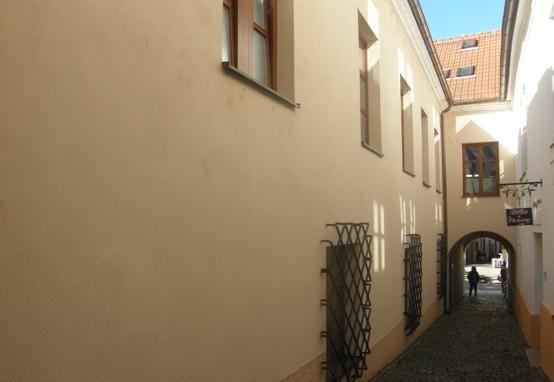
The first county house, purchased by the Trenčín county in 1633, is located on the current Peace Square in Trenčín. In 1637, he was in charge of a landlord, dignitaries and vice-governor of the county Trencin Spectabilis ac Perillustris Dominus Emerico I. Sandor de Szlavnicza, whose wife was the deputy Krisztina Darabos. He farmed on family property in Slávnica, represented the seat of Trenčín at the Hungarian Estates and the Evangelical Church. He was a prominent representative of Upper Hungaria Protestant nobility.
Brunovce manor house is historically linked to the castle Tematín behind Piešťany on the left side of the river Vah. It was owned by the Hungarian high-ranking dignitaries and magnates. The first written evidence of it comes from the second half of the 13th century. Twenty years until his death in 1321 it was owned by Mattás Csák Trenčiansky. The owner of the castle and manor in the 15th century was the Duke Miklós Újlaky and his son. Later, in the meantime, when the owners of the castle were several magnates of the Thurzo family, the ruler gave the estate of Tematín in 1638 back to Joannes Baron von Rottal and his siblings who were in close relations with the Sandor de Szlavnicza through
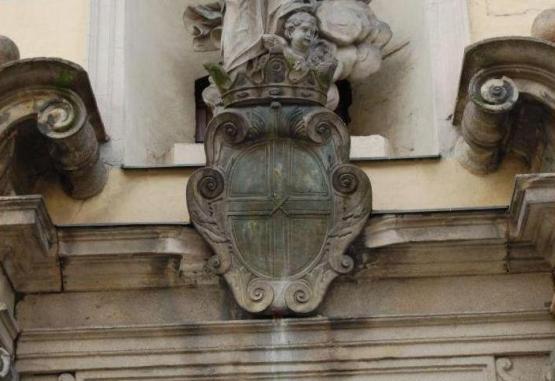
Catherine (Kata) Baroness von Rottal † 1638, wife of Ferenc I. Sandor de Szlavnicza, their children János Sandor de Szlavnicza 1666 (Anna Berenyi) Anna Sandor 1. Marton Szechenyi 2. István Ruttkay 3. László Hunyady, Gaspar III Sandor de Szlavnicza (Kata Szluha) Gyorgy Sandor de Szlavnicza, daughters of Maria Sandor (b.Pongrátz) and Ilona Sandor (István Brogyány) diplomat Gaspar IV Sandor de Szlavnicza (Erzse Thököly) László Baron Sandor de Szlavnicza 1741 †, Vice-Adanbert Julia Koszeghy); and Maria Sandor (Imre Nyari). Joannes von Rottal dismissed part of the property of Tematín István Count Csáky (* May 3, 1603) and his wife
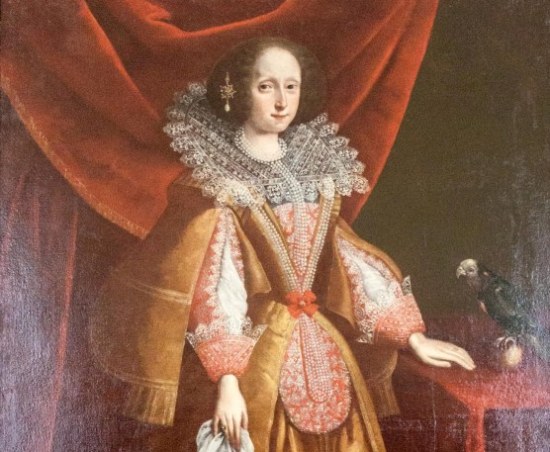
Eve, Countess Forgách de Ghymes et Gács (*06.12.1613 †24.04.1639). Suzane Baroness von Rottal its share chartered in 1653 Georgy Freiherr Berényi with which it has been in family relations oi through family Sandor de Szlavnicza, Szluha and Nyáry. In 1658 the owners of Tematín became Bercsényi genus, which also acquired estates in Brunovce.
In the year 1616, the son Joannes II was born on 5 December in the village of Batizovce to the husband of the provincial dignitary and landowner Georgy Radvánszky and Joane Catherine Mariássy.
On Tematín was born in 1665 Miklós Bercsényi †1725 captain of Ferenc II. Prince Rákoczy. Miklós Bercsényi was family ties with Count Csáky also through his wife Krisztina Countess Csáky. István Count Csáky younger holder of Tematín, confiscated possessions for participation in the uprising of Prince Imre Thököly in 1684 †1705.
Spectabilis ac Perillustrissimus Dominus Gaspar III. Sandor de Szlavnicza (2nde moitié du XVII e siècle), capitaine (ie gouverneur) du château de Sellye † 24.05.1673 fell in the battle with the Turks.
In the years 1671-1673, his son Gaspar IV. Sandor de Szlavnicza studied at the Faculty of Arts of Trnava University. He was an ally of Prince Imre Thököly.
List of nobility: Male Chyndice, Kis Hind Stephanus Sandor de Szlavicza 1677, Ladislaus Sandor de Szlavnicza 1640-1677; Joannes Sandor de Szlavnicza Senior, Ladislaum, Josephum, Joann, Franciscum, Samuel and Juliannam; Paolus Sándor de Szlavnicza, Paul Paul, Stephanum, Evam and Susannam; Michael Sandor de Szlavnicza, Elisabetham, Saram, Susannam and Juliannam; Stephanus Sandor de Szlavnicza Senior, Qui Samuel, Stephanum, Evam and Annam; Francuscus Sandor de Szlavnicza, Qui Franciscum et Sophiam; Stephanus Sandor de Szlavnicza junior, Qui Andream et Saram ;
Son of Imre I. Sandor de Szlavnicza, Vice-comes of Trenčín County Perillustrissimus Dominus István III Sandor de Szlavnicza († 20.12.1663 Sztricse), gradually had wives:
1. Perillustrissima Domina Eva Mariássy de Markusfalva (Markušovce), which
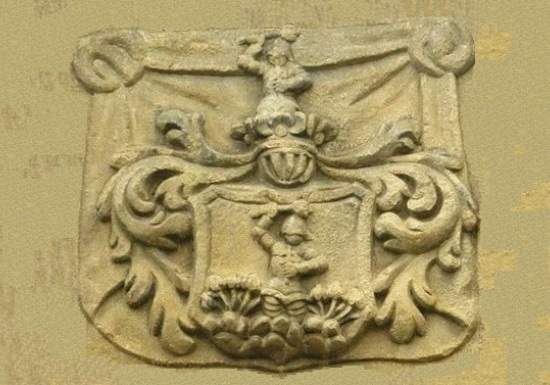
the parents were Perillustrissimus Dominus Ferenc Mariássy de Markusfalva, Vice-comes of the Spiš County (d: 1676) and Perillustrissima Domina Anna Geőczy de Szendrő.
2. Perillustrissima Domina Kata Forgách de Ghýmes et Gács, her husband was István III Sándor de Szlavnicza († Sztrice 20.12.1693). Her parents János count Forgách * 1638 † 1711 m.1655 and Helena Petróczy de Petrócz es Kaszvár * 1644 † 1701. They had 4 children: Kata Ujfalussy (nee Sándor de Szlávnicza) and 3 others.
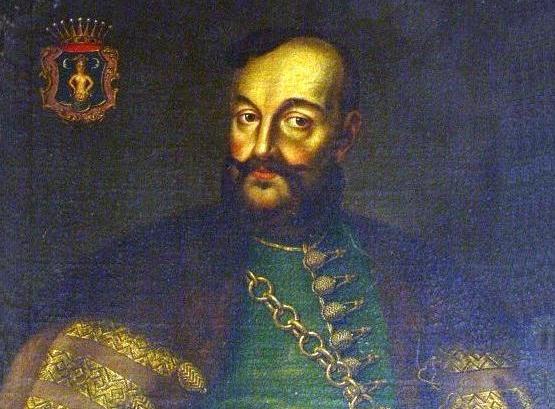
Captain fortress Nové Zámky Count Adam Forgách de Ghýmes et Gács *1601 †1681, his parents were Baron Sigismund Forgách and Countess Zsuzsanna Thurzó.
Virtuele tour of the ruins of the castle Gýmeš whose owners family Forgách were blood relatives of the genus Sandor de Szlavnicza.
3. Perillustissima Domina Erzsébeth Révay de Szklabina et Blatnicza (daughter of Georgy Révay and Jusztína Berényi de Karancs-Berény) m.1673. Her husband István III Sandor de Szlavnicza et Kisztricza, son of Imre I. Sándor de Szlavnicza and Krisztíne Darabos nádasdi. With his third wife, Erzsébet Révay had descendants of Ladislav, Imre and Žofia. He was also the father of Kataríne Sándor de Szlavnicza, Anna Sándor de Szlavnicza, Ilona Sándor de Szlavnicza, Ilona Magdolna Sándor de Szlavnicza, László Sándor de Szlavnicza and 2 others.
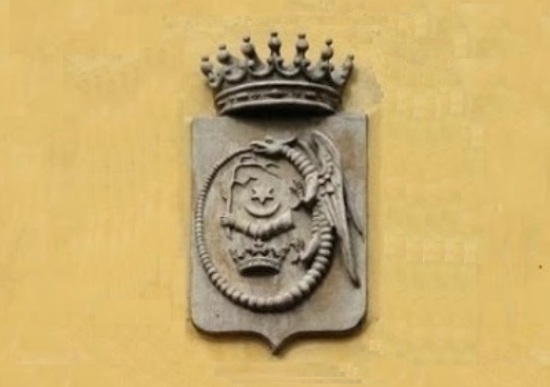
György Radvanszky de Radvany et Sajokaza father of János II. Radvanszky, father-in-law of Pál III Sándor de Szlavnicza, managed the family property in Radvan, represented the county Zvolen in the Estates and in the Evangelical Church. He was with Pál III. Sandor de Szlavnicza is a leading representative of Upper Protestant nobility. He participated in the conspiracy of the Count Ferenc Wesselényi de Hadad palatine and the Estates Rebellion of Prince Imre Thokoly. Franciscus Vesselényi de Hadad, Perpetuus de Murán R.H. Comes Palatinus, and Judex Cumanorum electus (1655).
An ally and relative of Prince Imre Thokoly Perillustris Dominus Gaspar IV. Sandor de Szlavnicza in 1685, after his capture by Varadinian Pasha Ahmed and defeat of the rebellion, went into exile.
Mehmed IV * 02.01.1642 † 06.01.1693 The Sultan of the Ottoman Empire from 1648 to 1687 was an ally and supporter of the Kurucs. Gaspar IV Sandor de Szlavnicza, a close relative of Prince Imre Thököly de Késmárk and his wife Countess Helena Zrínski, captain of the princely court, diplomat, was for two periods an envoy to the court of Ottoman Sultan Mehmed IV and his son Sultan Mustafa II. With an even more important mission, he was an office and a Kurucs envoy at the court of King Louis XIV of France. King Louis XIV of France supported the Kurucs politically, militarily and materially.
In 1687, correspondence of one of the ancestors of the author, György Radvanszký, with relatives of the Sandor de Szlavnicza family, Ilona Zrinyi, the wife of Prince Imre Thököly defending the last stronghold of the rebels of Mukachevo, was revealed. The Emperor General Antonio Caraffa considered this correspondence a high treason and brought him and his son János II before the extraordinary court in Prešov. He died of torture in interrogation on April 18, 1687 in Prešov. In the manuscript he left the diaries of Hungarian and stolen assemblies.
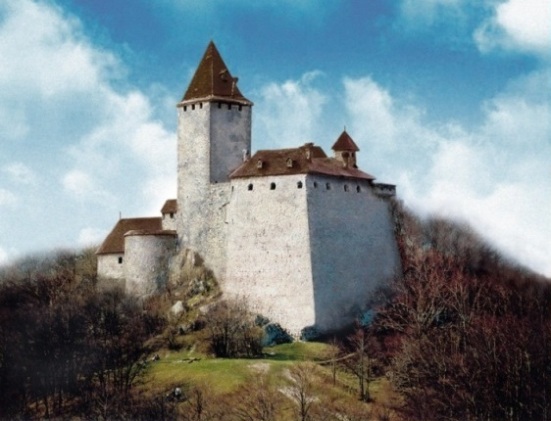
In a document on the distribution of the Tematín estate, the Kuruc diplomat Gaspar IV. was registered as the users of the Tematín castle. Sandor de Szlavnicza and his wife Erzsébet Thököly de Késmárk.
Prešov slaughterhouse 16 February 1687 to 12 September 1687. The executions took place: 5 and 22 March, 16 April, 6 and 14 May and 12 September. Of the 25 defendants were executed 24, one - Joszef Roth of Banska Bystrica after the torture bought for 10 000 talers. Executed Prešov citizens were prominent burghers: senators, guards, leaders of anti-imperial resistance in the city. The Keszer family suffered the most, losing four members: Father Andreas Keczer, his son Gabriel and two sons-in-law, Žigmund Zimmermann and Martin Sárossi. In addition, executioners died: Gaspar Rauscher, Ferenc Baranyai, György Flaischhacker, György Schonleben, Frederick and Daniel Weber. The other victims were Simon Feldmayer, a family from Germany (he committed suicide with a pocket knife before execution), Samuel Medvecký of Orava, György Radvánszky de Radvan, György Bezegh of Zvolen, Gabriel Palásthy of Krušovce (of Nitra), David Feja, Košice judge Lány or Kováč, butcher from Košice, certain Fazekaš of Rožňava, Andreas Székely - unknown origin, certain Calvinist pastor, postman and two servants.
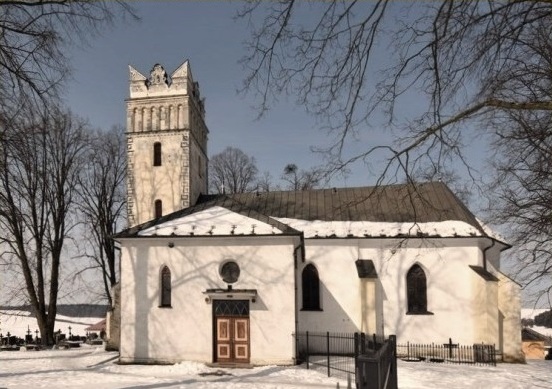
The Catholic church in the village of Svinná, where Andreas Keczer, the authors\' direct ancestor Gyorgy Radvánsky de Radvány et Sajókaza, J. Bertók and G. Palásthy, were secretly buried at night under the tower. There is no news about the last resting place of the other barbarically tortured victims. The owner of one manor in Svinná was the sister of Andreas Keczer - Klára, the widow of Miklós Merse from Zwina. Without success, she pleaded with Caraffa to release her brother\'s quartered corpse. She decided to secretly hang him from the hooks by bribing the executioners and their understandings and burying him in the Svinian, then evangelical, temple. The son of the martyred magnate Gyorgy Radvánszký János II. he also tried to obtain the quartered remains of his father. He met Klára Merse, she trusted him with her plan and they decided to carry out this intention together. whereas János Bertók and Gabriel Palásthy were executed and hanged at the same time, János II. Radvánszky\'s bodily remains of four bodies and laid them together in Svinná except for his father\'s head. He took her back to Radvaň wrapped in a towel and with an iron tip on which she was impaled. They stored her in the family crypt.
After three years of siege on October 14, 1688, the fortress of Mukachevo fell.
After the liberation from the Turks in 1691 Lipik belonged to the estate with the center of Pakrac in Slavonia. Its owner became the Imperial Chamber in Vienna.
In December 1692, the Nitra Treasurer Adalbert Sandor de Szlavnicza was to select from his relative István Count Csáky an imposition of 15 gold and 84 denarii for 1691, who borrowed it from him and gave him a desolate settlement in Modra. This indicates its weaker management. Adalbert Sandor, on the other hand, purchased advances to the npr. by Lovčány and Lévay in Modrová and others. He became a mortgage owner of a large part of the village for example. In 1697 he took two meadows from the serf Ferenc Zrnák, one at Slávnica and the other at Skalka for 10 gold, and from Miklós Loco two meadows of Veľká Modrová. Confirmation of the property transfer was issued by Jozef Sigismundi, signed as mayor of Velkomodrovský. The document is the oldest surviving municipal document and one of the few times that the village mayor could write.
Ottoman Sultan in 1695-1703 Mustafa II. he was a supporter and ally of the chickens as his father Sultan Mehmed IV.
In 1704 from Kurucz diplomat Gaspar IV Sandor received a financial contribution to his regiment Count Šimon Forgách. His brother, Deputy of Nitra, Adalbert Sandor de Szlavnicza (ablegate at the Onod Assembly 31.05.-22.06.1707, lived in the house of László Hunyady in Trnava, left the town in 1707 in connection with the rebellion of Ferenc II. Prince Rákoczy). Their brother was Gyorgy Sandor de Szlavnicza, who had daughters Maria (b. Pongrácz) and Ilona (István Brogyány). Most of the castle and estate was owned by the Bercsényi family, who started building the manor house in Brunovce. Miklós Bercsényi during the uprising of Ferenc II. Rákoczy had the castle repaired.
Spectabilis Dominus Emerico II Sandor de Szlavnicza and Spectabilis Domina Magdaléna Okolicsányi de Okolicsna had sons Pál III Sandor de Szlavnicza (1714), Ferenc II. Sandor de Szlavnicza (* 1695).
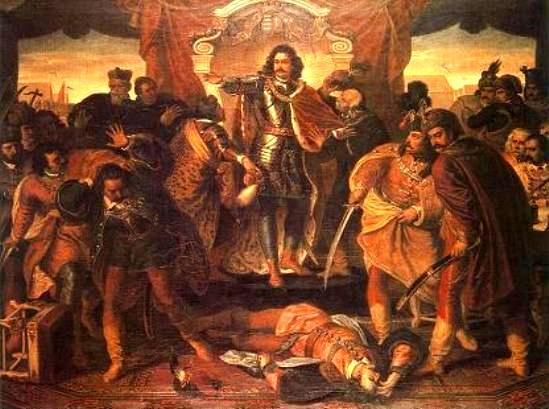
Vicecomes of Esztergom county Menyhért Sandor de Szlavnicza (and 1. spouse Joana Gubatoczi son Steph Laurentius Sandor de Szlavnicza *1703 Trnava) won the title of baron. At night the Lord in 1707 was of the house in the first district of Trnava forcibly kurucz to Onódian parlament 27.
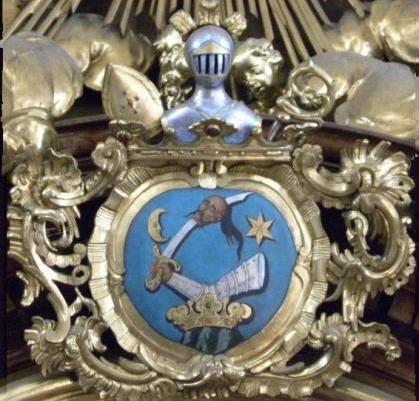
in which were killed representatives Turiec vicecomes Kristof Okolicsányi of Okolicsna and county notary Menyhért Rakovsky of Nagyrákó and Nagyselmecz. French General Louis Lemaire, military attache of Louis XIV by Ferenc II Rákóczy wrote: László Ignác Bercsényi son of Count Bercsényi, as a young barbarian saber thrust to the House envoy Rakovsky. In 1710 Imperial General Sigbert Heister conquered Brunovce with the intent to capture Miklós Bercsényi, who withdrew from the fortified manor. Tematín castle Imperator army failed to occupy the running, the charging be extended for a few days. Miklós Bercsényi the meantime moved off the main road to Poland.
In 1711 Miklós Bercsényi, Tematín was confiscated estates. Tematín imperial army demolished mansion Brunovce got Imperial General Freiherr Lindenheim.
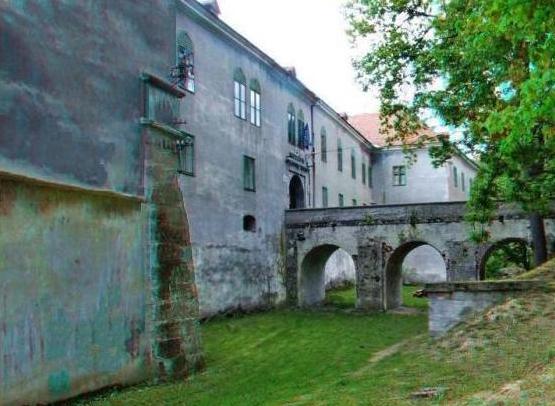
Castle and Palace Blue Stone in the district Veľký Krtíš region Banská Bystrica owned genus Balassa de Kékkö et Gyarmat. Anna Balassa marriage with Ferenc II. Sandor de Szlavnicza whose mother was Magdolna Okolicsányi However, these families get into the property and family relationships.
In December 1692 Nitra County Treasurer Adalbert Sandor de Szlavnicza had to pick from his relative Stephanus Count Csáky imposition 15 gold and 84 pence for the year 1691, who borrowed them from him and gave him an advance settlement in the desert Modrová. This suggests the weaker economy. In contrast, Adalbert Sandor in the coming years bought advance for exemple from Lovčány and Lévay in Modrová other. He became the owner of a large part of the mortgage village. For exemple in 1697 he took to advance two meadows from serf Francis Zrnák, one at Slivnica and at Cliffs second for 10 gold and two from Nicholas Locových meadows degrading Velká Modrová. Confirmation of property transfers issued his hand Joseph Sigismund, signed as mayor Velkomodrovský. The document is the oldest surviving general papers and one of the few cases then, the village mayor knew where to write .
Early 18th century lived in Trnava in the third quarter Gaspar IV. Baron Sandor de Slavnicza. In 1723, a tax census indicated that behaved in a townhouse one cow and one heifer. His son Ladislaus Baron Sandor de Szlavnicza living in Trnava in the third quarter possessed here in 1725 with one cow and heifer.
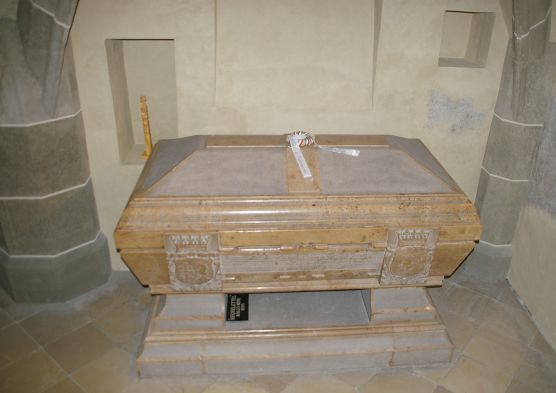
Slide the sarcophagus of St. Elisabeth Cathedral in Kosice. In the fourth special are the remains stationary Duke of Kurucz Miklós Bercsényi and his wife Krisztina Csáky. It is for the Hungarian written, Count Nicholas Bercsényi de Székes, died November 6, 1725 and his wife Countess Krisztina Csáky de Keresztszegh, died in Rodosto April 25, 1723.
Nitra county council Adalbert Sandor de Szlavnicza, already in 1723 owned a whole dominion Lúka (Ferenc Sandor de Szlavnicza and wife Borbála Motesiczky their son István Sandor *08.11.1751 Lúka district Nitra †03.29.1815 Wien), purchased from Cardinal Csáky all advance and inskription right of dominion Tematín the residual sum of 7683 florins. He became the owner of most of the former hereditary estate Tematín. From 1730 we have evidence that after his death Judith baroness Hunyady de Kiskresztyen widow of Pál Sandor de Szlavnicza son of vicecomes in Nitra Adalbert (Aladár) Sandor de Szlavnicza and Julia Köszeghy in the year 1723 Brunovce bought.

Ladislaus Casparus Sandor *08.04.1720 Modrová, parents Ilustris Domini Pauli Sandor and Perillustris Domina Juditha Hunyady. Godparents Revexendismus Dominus Adalbertus Révay Compatro sa Periillustris Dona Maria Kermendy in Luka.
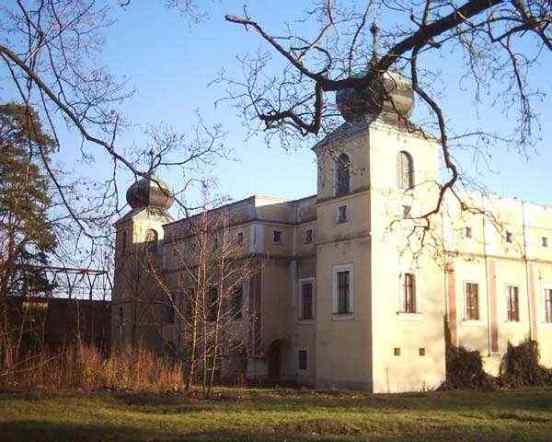
Brunovce manor house in the current period. In the first third of the 18th century it was bought by the Great Lord Paolus Sandor de Szlavnicza, one of the ancestors of the author\'s family.
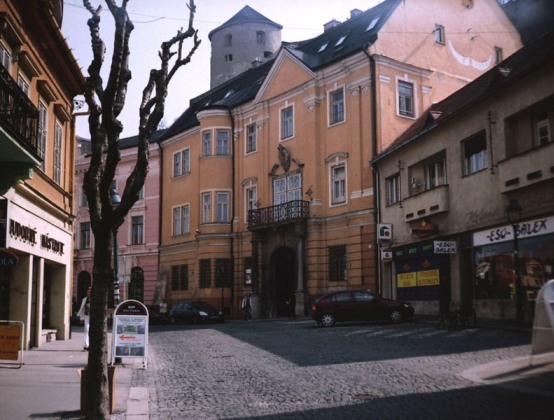
Seat of the deputy of Trenčín comitatus Pál III. Sandor de Szlavnicza under the castle rock next to the Tatra Hotel in Trenčín. The hotel is especially known for the fact that in its café in 1953, the state confiscated things from its state confiscated were placed on the pillory to warn the entire city of the spouses Jozef Čevela and Valéria Stiglitz during pre-trial detention. Their niece Alžbeta in 1944 married First lieutenant Aladár II. Ondrejkovič, grandson of Anna Sandor de Szlavnicza. Son of Imre II. Sandor de Szlavnicza Pál III Sandor de Szlavnicza (1714) was a Vicecomes of Trencin county.
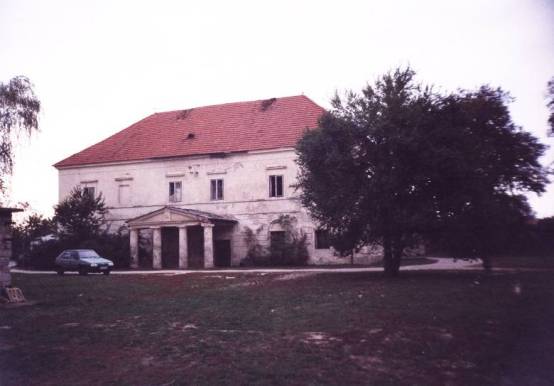
His brother Ferenc II. Sandor de Szlavnicza (*1695 †15.11.1760 Ostratice). Author visited the cemetery and family mansion Sandor de Szlavnicza in the village of Kissándori, Kisch-Sztricze. You met her in my mind. There was only yesterday, or two hundred years ago ?
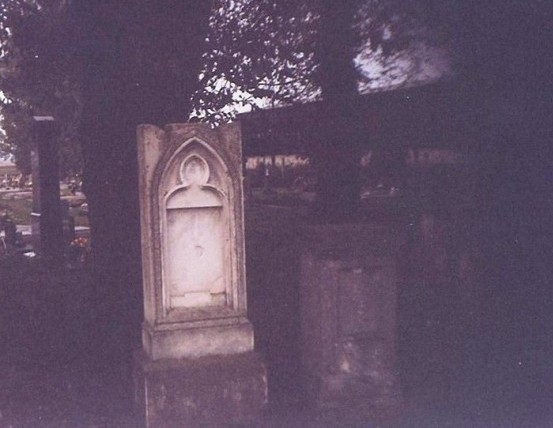
In the Kisch-Sztrice) a small evangelical cemetery gravestones have Enlightened sir Karóly Sandor de Szlavnicza and Enlightened sir László Sandor de Szlavnicza
After the liberation from the Turks in 1691 Lipik belonged to the estate with the center Pakrac. Until the mid-18th century, the owners often turns: Imperial Chamber (1729), the secret court counselor Johann Theodor Baron Imbsen (1740-1745). Francis Baron Trenk (1747), Imperial Chamber (1751), Mihály Sandor de Szlavnicza (1760) his son
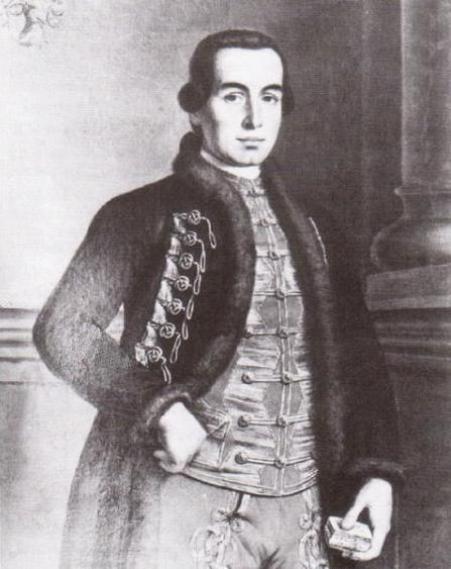
Josephus Baron Sandor de Szlavnicza took over from him and mash and feudal estates nearby Pine estates in Slavonia. Failed to solve recurrent problems of their subjects and therefore it waived at the end of 1767 in favor of brother Antal Sandor de Szlavnicza
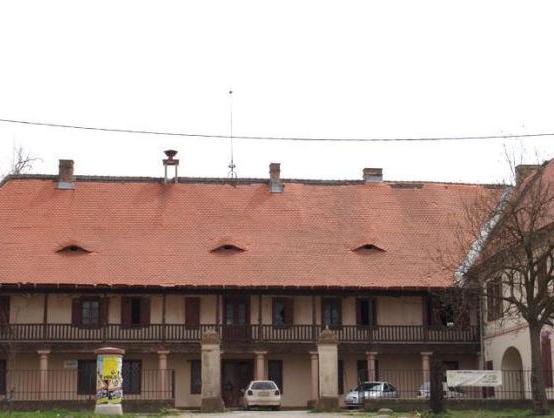
Former Josephus Sandor de Szlavnicza mansion in the Nustar, Slavonia
Vizlás, Nógrád, Oldalszám: 46, 221, 222
Josephus Ghyczy
(? - †1562)
Palatine of Vráble
Ghyczy was a Hungarian noble family. In 1550 received donation in the Nitra County. After the abolition of serfdom in 1848 in Slovakia Ghyczy family owned a manor in the Big Lapáš. Josephus Ghyczy was deputy city mayor of Nitra and palatine stool predialist archbishopric of Esztergom Vrable. The first known members of the genus are mentioned in 1244 as owners Gic village in Veszprém throne from which it derived the name. Slovakia is received during the 15th century. In 1571 Captain George Ghyczy of Nové Zámky Verancsics archbishop wrote that the debugger fought against the Turks. After 1848 he lived Rafael Ghyczy and his wife Janka Sandor de Szlavnicza.
List of taxpayers Vizlás, Nógrád, Oldalszám: 46, 221, 222: Gregorius Pap; Benedictus Vincze; Paolus Sandor de ; Joannes Kakuk; Stephanus Jakab; Martinus Sandor de ; Stephanus Sandor de *08.11.1751 Lúka district Nitra †29.03.1815 Wien; Balthasar Sandor de ; Sandor Gaspar de ; Albertus Sandor de ; Petrus Sandor de ; Mathias Vincze ; Vincze Gregorius ; Michael Berta ; Georgius Lom ; Georgius Dudas ; Joannes Tóth.
Virtual view of buildings in the historic center of Trencin. Left of the Sandor Palace is a hotel Elisabeth, which in 1953 were exposed to the public pillory married Josef Čevela and Valeria Stiglitz. Even today older townspeople remember how you had to attend trade shows them confiscated things and things that belonged pathetic Lady Charlote Stiglitz b. Buchler (perished in the Auschwitz concentration camp), mother of Valéria Čevela and Lady Júlia Ličko (grandmother of the author). The event had a direct impact on subsequent years of persecution
Palace of vicecomes Sandor de Szlavnicza in the center of Trencin. Now a museum. No initial period the device is in this museum is not, but there can be seen a few portraits of Trenčín vicecomess and nobility, all blood relatives of the genus Sandor de Szlavnicza.

Le Roi Soleil (Sun King). The document on the division of the estate Tematín in 1687 are registered as users of the castle Gaspar IV Sandor de Szlavnicza (Kurucz ambassador at the court of the French King Louis XIV de Bourbon France) and his wife Ersze Thököly. In the years 1671-1673 he studied at the Faculty of Philosophy University of Trnava. Ally Prince Imre Thököly. In 1685 after the defeat of the uprising was the leader of Imre Thököly went with him into exile.
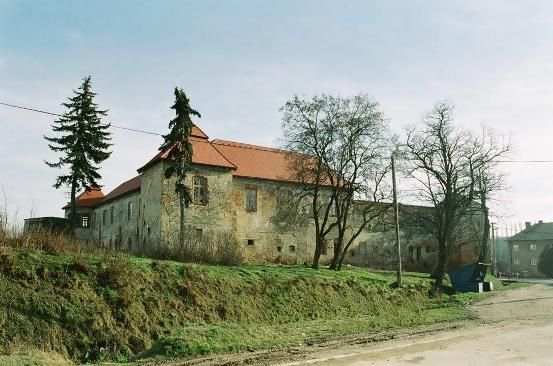
The manor Lukáčovce whose owners were Gasparus IV Baron Sandor de Szlavnicza and his wife Elizabeth, Baroness Thököly de Késmárk. Family Sandor was the owner until the 20th century.
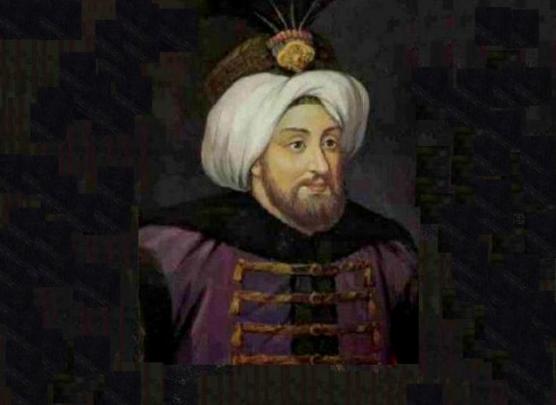
Ottoman Sultan Mustafa II. Gaspar IV Sandor de Szlavnicza was a close relative of Prince Imre Thokoly de Késmárk and his wife Countess Ilona Zrinyi (Jelena Zrinski), captain of Court Prince Imre Thokoly, diplomat, two periods ambassador at the court of the Ottoman Sultan Mehmed IV and his son Sultan Mustafa II, and even more important mission at the French King Louis XIV and chancellor). Sultan Mehmed IV and subsequently his son Sultan Mustafa II were allies and supporters Kurucz. Mehmed IV *02.01.1642 † 01.06.1693 sultan of the Ottoman Empire from 1648 to 1687, Sultan Mustafa II in the years 1695-1703. French King Louis XIV supported Kurucz politically, militarily and materially.
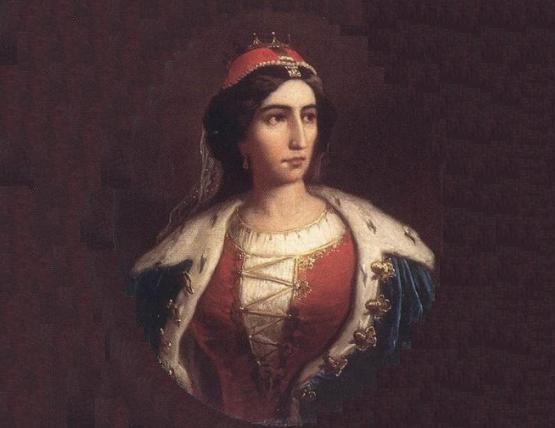
Helena Zrinski (Ilona Zrínyi) *1643 Ozalj, Croatia 1703 †Nicomedia, Ottoman empire. Gender Croat, daughter of Bán Peter Zrinski and Catherine Anne, née Frangepan. Father and brother, her mother reading Mrs. poet Francis Kitts Frangepan were hero Turkish fighting. Contemporaries called them shields of Christianity and the terror of the Turks. Both were for participating in a conspiracy kuruc Francis Wesselényi executed States in the Wien New Town in April 1671, Lord Published in 1666 for Ferenc I. Rákoczi. Had children with him: Georgius (died as a child), Juliana and known Ferenc II. Rákoczi. After her husband\'s death held over management of the Rákoczi property Regec, Makovica and Mukachevo. In the 1682 married a Habsburg uprising leader Imre Thököly. Actively participated in the uprising and rebel bastion of defense of the castle Makovica in Zborov. The famous castle defense Mukachevo, who defended against the imperial army three years. After the betrayal of the Secretary of the imperial army was outnumbered 14 October 1688 the castle was conquered and demolished. She was interned in Uršulín monastery in Vienna. Imre Thököly it after three years in exchange for a captured general Donat Heissler. Until his death 12 years she lived with her husband in the Turkish exile. Her remains were moved in 1906 to Košice. Buried a son of Ferenc II. Rákoczi in the crypt of the Cathedral of St. Elisabeth.
Sp. D. János II. Radvánszky de Radvány et Sajókaza married Anna Maria Szentiványi de Liptószentiván in Zvolen in 1695 and in the 1701 he received the title of King Leopold I. He later joined the uprising led by Ferenc II. Rakoczy, Prince of Transylvania and was his secret adviser and treasurer.
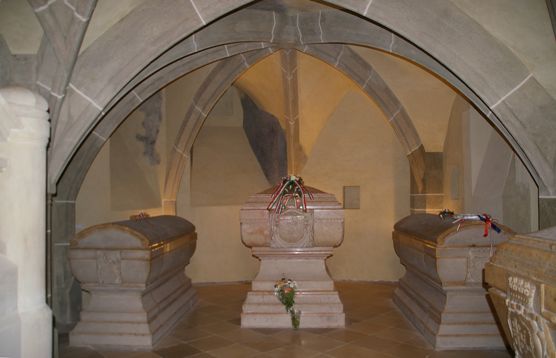
The crypt of the Kosice Cathedral of St. Elizabeth in early Gothic style leads seventeen steps and is in her four marble coffin, which in the drawing Frederick Schulek they made sculptors Anselm Andreetti and František Mikula. The remains of Francis II. Rákóczi, hismother, Helena Zrinski and son Joseph Rákóczi are in common sarcophagus. Prince lies in the coffin of cypress wood cushion filledterrain of his native Börse and the Great Saris, where he lived for some time. Hungarian inscription on the sarcophagus proclaims the final resting Ferenc II. Rákóczi, Hungarian and Transylvanian prince, died in Rodosto April 8, 1735, his heroic mother Ilona Zrínyi,wife of Francis II Rákóczi and later Imre Thököly, died in Nikomédii February 18, 1703, and son Joseph Rákóczi, the Cernavoda died November 10, 1738 . the evil fate Nations blew them into exile. Slide the description here is published thanks to Mr Peter Petrulák which is. Selflessly he sent for this purpose.
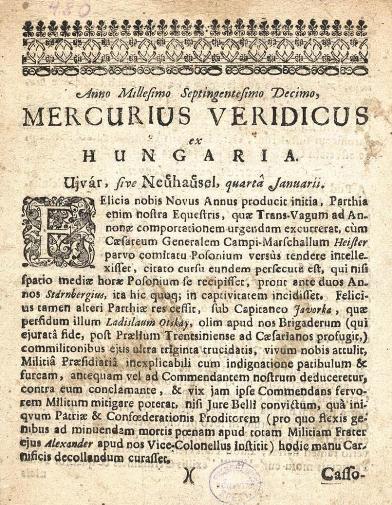
The first issue of the newspaper Mercurius Hungaricus issued by Antal Count Esterházy in the year 1705, the second of the same year in May, the August number Mercurius was released under the name Mercurius ex Hungaria ; Casparus (Gaspár) IV. Sandor de Szlavnicza †1723 ?
_____k__pia_____esterh__zy_2.230914_210638_23.jpg)
After the defeat of the uprising in Trencin in 1708 went to the England, then to France in 1717 at the invitation of the sultan passes into ety in the Ottoman Empire except Francis II. Rákóczi and his companions and aides. The remains of the coming together transferred to the crypt in the Cathedral of St.. Elizabeth. The sarcophagus on the right: therein remains kuruc General Antal Esterházy. Text in Hungarian on it shows: Count Antal Esterházy of Galanta et Fraknó, died on 10 July 1722. Rodosto captioned images published here thanks to Mr Peter Petrulák. Selflessly sent them for this purpose.
Baron Menyhért Sándor de Szlavnicza (1661-1723), alispán (vice-comes) of the Esztergom County.
The comes of the Turiec Peter Révay, the husband of Elisabeth Sandor de Szlavnicza, received on June 17, 1723 from King Karóly VI. count title. The third wife of István III. Sandora de Szlavnicza was Elisabeth Révay.
Vicecomes of theTrenčín County Pál III. Sandor de Szlavnicza (1714) had wives 1. Radvanszky N. Baroness de Radvány and Sajókaza 2. Anna Dobay de Kisdoba and Nagydoba. 3. Erzse Révay. By marrying his six sons and three daughters with daughters and sons of the well-known evangelical families Plathy, Sirmiensis, Sréter, Ilgó and Otlýk, he confirmed the family\'s hitherto related interests and the political orientation of his ancestors. His son István Sandor de Szlavnicza married Teréz Beniczky.
After the year 1733, part of the ownership of the village Lukáčovce was passed on by the Sándor of Slávnica family to the Bishop of Nitra, but they retained part of the composesorate.
Count Antal Sándor of Slávnicza (1734-1788), chambellan KuK de la Table des Sept.
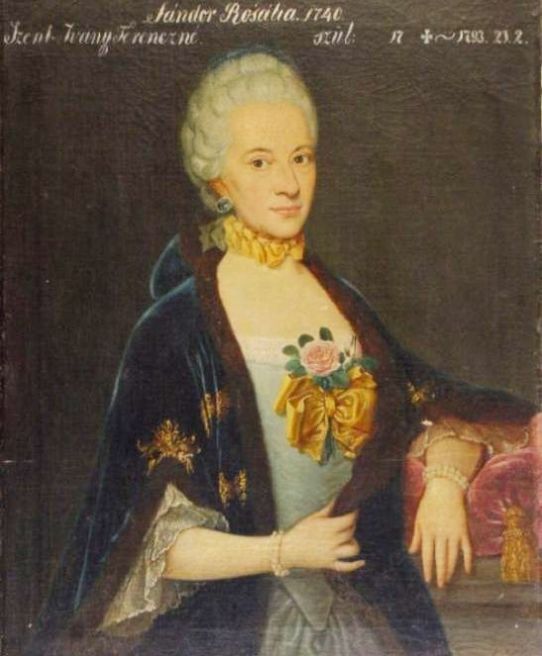
Illustrissima Domina Rozália Sandor de Szlavnicza. Her husband was Count Ferenc Szent-Iványi.
Sp. Domina Júlia Sandor de Szlavnicza * 1759 Pest † 1832 married 13.11.1783 with Count Joseph Forgách of Gýmeš and Gác.
In 1748, a classicist manor house of the Ivánka family was built in Malé Zlievce. In the first half of the 18th century. members of the aristocratic and provincial families Bene, Gedey, Ivánka, Hellembach, Géczy, Ebeczky, Veres, Sarkóczy, Prileszky, Horváth, Horánszky, Mikula are mentioned in connection with the village.
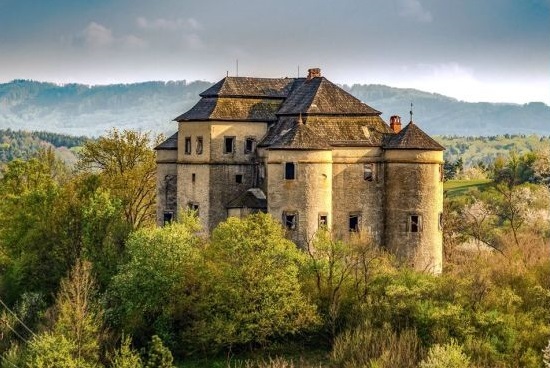
Sp. D. Tamás Sandor de Szlavnicza * September 7, 1781 Uhrovec, son of Sp. D. István Sandor de Szlavnicza and Terézia Beniczky, grandson of Zvolen Landlord and Vicecomes Sp. D. Tamás VIII. Beniczky de Benicz et Miczinye inherited his first name and Compossessorat. His brother Ladislaus died prematurely and Michael had no offspring.
In 1787 the village of Malé Chyndice had 75 houses and 410 inhabitants.
In August 1788, they raised the Nitra branch of the Sandor de Szlavnicza family to the Count.
In the year of the Lord 1797, Count István Illesházy (since 1799 hereditary comes of county Trenčín and Liptov), colonel of the Trenčín and Liptov insurrection army, also called members of the Sandor de Szlavnicza and Ondrejkovič families into military service in hussar regiments.
In the years 1799 - 1802 he worked in the Diocese of Nitra, Trencin chair, Catholic parish Bošany, church of st. Martin pastor Sp. D. Emericus Sandor.
Military Almanac No. XVI. for the year 1805 Hussar regiment No 6 Hadik Andreas, Blenkenstein Ernst. Staab: Brandeis in Bohmen. Ober-Lieutenant Johannes Ondrejkovits, Zaborzky (Casp.), Bernolak (Ign.), Unter-Lieutenant Bossányi (Joh.), Révay (Baron Georg.); Hussar Regiment No. 9, Nádasdy Franz, Erdödy Johann, Staab: Essegg in Slavónia, Maj. Rakovsky (Steph.), Unter-Lieutenant Josephus Sandor de Slávnica, Ober-Lieutenant Tóth (Frz.), Horváth (Frz.); Hussar Regiment No.10 Meszáros Joh., Stipsicz Jos. the year 1801 Staab: Uibecs in Banát ;
Militär Almanach Nro XVI. Schematismus der Kais. Konigl. Armée, für das Jahr 1805. Ungar. I. R. (19) Stab: Caschau in Ungarn. D´Alton, Rich. 1786 Alvizini Jos. Unter-Lieutenants: Berzevitzy (Bar. Vinc.)..., Unter-Lieutenants: Szilly (Joh.), Szlavy (Ant.)... Fähnriche: Sandor (Paul), Ghilany (Paul)... ;
Militär Almanach Nro. XX. für das Jahr 1810 Husar Regt. Nro. 6 Hadik Andreas, Blankenstein Ernst. Staab Rzeszow in Galicien. Seconds-Rittmeister Ondrejkovits Job, Farkas Georg, Révay Baron Georg. Ober-Lieutenants. Keglevits Graf Alex, Zapary Graf Mich, Bossanyi Joh.
Militär Almanach Nro. XXIII. für das Jahr 1813 Ungar I.R. Gyulay Franz. Spleny Gabr. Ober-Lieutenants: Sandor Paul, Ballasy Ladisl. ;
Imre * Nov 15 1745 Draskóc Túróc, † 10 Feb 1813 Malé Zlievce (Kiszellő), son of János Ivánka and Eszter Koncsek dvoreczi. Husband of Sp. D. Zsusana Gedey.
Imre Baron Ivánka (* 9.12.1818 † 1896) politician, economist, social official. He was born in Horné Semerovce in an old yeoman family. His family comes from Dražkovce district Martin.
Inventory of nobility: Malé Chyndice (Kis Hind) Stephanus Sandor de Szlavicza 1677, Ladislaus Sandor de Szlavnicza 1640-77; Joannes Sandor de Szlavnicza senior, qui Ladislaum, Josephum, Joan Franciscum, Samuel et Julianna; Paolus Sándor de Szlavnicza, qui Paulum, Stephanum, Evam et Susanna; Michael Sandor de Szlavnicza, qui Elisabeth Saram, Susanna et Julianna; Stephanus Sandor de Slavnica senior, qui Samuel, Stephanum, Evam et Annam; Francuscus Sandor de Slavnica, et qui Franciscum Sophia; Stephanus Sandor de Slavnicza junior, et qui Andream Saram; Since the 14th century, the estate belonged to the village Jelenec, in 17th-19th century yeoman families Bujník, Dežerický, Sandor and others. In 1584 it robbed the Turks and the village was deserted. In 1787 had 75 houses and 410 residents in 1828 had 70 houses and 491 inhabitants.
Lukáčovce district Nitra. During the 16th century in the possession of the village were replaced genera Požáry, Pongrácz, Nyáryi and Thurzo. Around 1620 comes to the village Lukáčovce new noble family Sandor of Szlavnicza. Sandors were the Trenčín nobility in the first half of the 13th century. In August 1788 they promoted to county status. In Lukáčovce (Lakács) since 1733 part of the share ownership of the village refer Nitra bishopric, but part compossessorate retained. End of the bishop\'s ownership of the village dates back to the twenties of the 20th century, when was a large land reform. After the Second World War, the rest of the Bishops\' assets nationalized.
NETJOGTÁR. Laws, their comprehensive legal database
1827th Law XII. under the Act
the names of donors finace resources and tangible assets for Hungary Academy of Arts and Sciences in memory of posterity and the memory of the ancestors under the Act as a thanks to those who donated in order to cultivate and spread the language. Amounts received and the value of the gracious permission of His Royal Highness, listed their names:
His Majesty Prince Josef, c. the. heir Hungary, Czech, Hungarian palatine, patron of the Institute, 10,000 gold in cash.
István Széchenyi 60,000 gold.
Abraham Vay 8000 gold.
György Andrássy 10,000 gold.
George Karolyi 40,000 gold.
sir Francis Pálffy, évenkint sum of 400 guilders.
János Ker Batthyány 10,000 gold.
Michael Esterházy 10,000 gold.
Karóly Esterházy Jr. 10,000 gold.
Pál Széchenyi 10,000 gold.
Gábor Justh 1,000 gold.
Imre INKEY 1,000 gold.
Széki Count József Teleki, stepmother, widow of the deceased László Count Teleki, as well as férjtől from natural and legal guardian of her son and caretaker, and two brothers, Adam and Samuel Teleki also nevökben counts, including files of at least 30,000 volumes, which is known as common father, László Teleki Number gyüjtetett effort and cost, plus 5,000 gold.
Istvan Szabó Szepessy 200 gold.
Duke Philip Batthyány 50,000 gold.
Earl Anthony Cziráky 3000 gold.
Ján Keglevich 6000 gold.
Joszef Kopátsy, Bishop of Veszprém, 2000 gold.
Samuel Papa 1,000 gold.
Charles Baron Zay 2,000 gold.
Charles Baron Mandelli 1000 gold.
Istvan (Stephanus) Sandor Szlavniczai later bequeathed 10,000 gold, in addition to money, collections of rare and valuable library, rare paintings and tapestries. Baron István Sándor (* 1756 † 1815), célèbre écrivain et bibliographe hongrois.
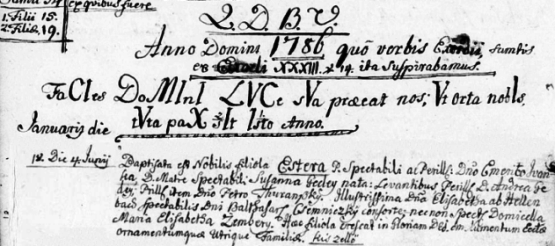
Estera Ivanka *04.06.1786 Malé Zlievce, parents Spectabili ac Perillusstris Domino Enrico Ivanka de Draskócz et Jordánfold and D. Matre Spectabili Susanna Gedey nata: Levantibus Perillustris D. Andrea Gedey ; Perillustris Idem Dno Petro Thuranszky. Illustrissima Dna Elisabetha ab Hellen bacs Spectabilis Balthasar Csemniczky conforte ; peenon Spectabili Domicella Maria Elisabetha Zembery. Hac filiola Erescaf in Romanian Dei. Nebmentum Ecta .... Kiss Zello.
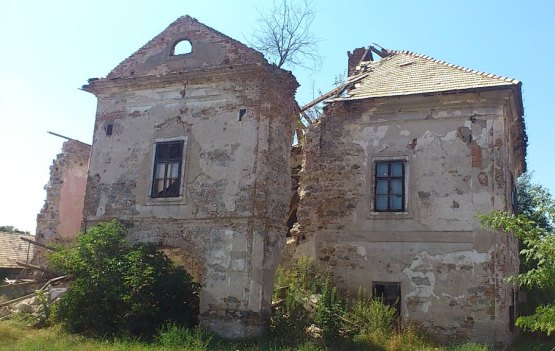
Malé Zlievce mansion. Here were born in 1786 Estera Ivanka Baroness de Draskóczy et Jordánfold, and later her son Stephanus Sandor de Szlavnicza, whose father was Thomas Sandor de Szlavnicza and old mother Beniczky Teresa, daughter of viceomes of Zvolen county. Her father was spectabilis Dominus ac Perillustriss Enrico Ivanka de Draskócs et Jordánfold and Matra Domina spectabilis Susanna Gedey. Bleak state of the mansion of Baron Prónay affinity and property associated with strains Beniczky, Ivanka (Amalia Prónay), Gedey, Sandor de Szlavnicza description for the current social order of the state of cultural monuments. Is a social demand and the definitive closure of the role of former inmate of the family ?
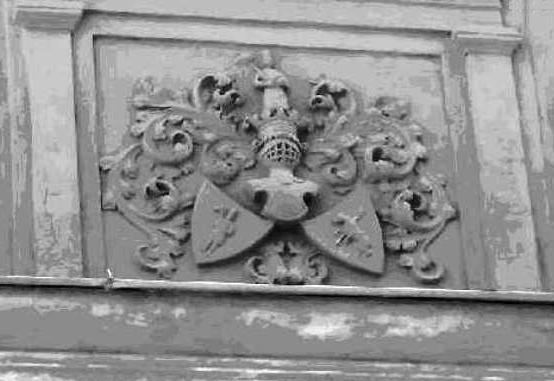
Coat arm of genus Ivanka. Stephanus Emericus Sandor de Szlavnicza *16.12.1806 Malé Zlievce parents Thomas Sandor de Szlavnicza and Esthera Ivanka de Draskócz et Jordánfold. Plášťovce.
In 1828, the village of Malé Chyndice had 70 houses and 491 inhabitants.
Imre Ivánka de Draskócz et Jordánföld after graduating from the Military Academy in Tulln in 1837 joined the infantry regiment. In 1838 he was transferred to the 12th Hussar Regiment in West Bohemia.
After the resignation of Comes István Illesházy, the administrator of the Trencin county Aloisius Baron Mednyánszky (blood relatives of the Sandor de Szlavnicza family) became in 1822-1835 and in 1835-1842.
Stephanus Ivánka and his wife Anna Zsittnyan, Bánovce nad Bebravou the year 1845. The honored mother of the District Notary Stephanus I. Ondrejkovič was Antónia Zsittnyan.
After the abolition of serfdom in 1848 in Slovakia, the Ghyczy family owned a estate in Veľký Lapáš. After 1848 Rafael Ghyczy and his wife Janka Sandor de Szlavnicza lived (Vizlás, Nógrád, Oldalszám: 46, 221, 222).
In 1848 First lieutenant cavalry Imre Ivánka de Draskócz et Jordánföld mediated a ceasefire between the troops of General Windischgrätz and Prague insurgents. As commander of the First National Guard, which consisted mainly of soldiers Novohrad, Hont and Pest county, had a large share of the victory on 29 September. 1848 over Croatian Bán General Josip Jelačič. The military career of Colonel Imre Ivánka de Draskócz et Jordánföld was interrupted on 24 October 1848, when he fell as a parliamentary in Austrian captivity.
After the defeat of the Revolution of 1848/1849, the Minister of Education of the Austrian Empire issued Count Lev Thun for the grammar school a new organization order (Entwurf). Trenčín Grammar School became a four-class grammar school with Slovak language. German was a compulsory subject, and Hungarians were taught semi-illegally.
Since 1849 Ladislav Vietoris (a blood relative of the genus Sandor de Szlavnicza) was suspended by the Austrian administration of the Hungarian county council appointed by the commissioner of the Trencin County.
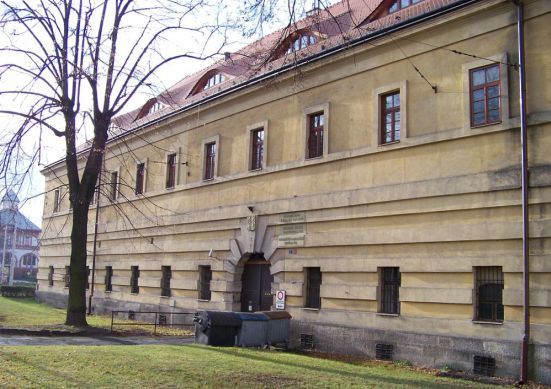
Since 1850 was Colonel Imre Ivanka de Draskócz et Jordánföld imprisoned in a military prison for officers in Hradec Králové. In the same prison, 100 years later, in 1950, his relative Captain Aladár II. Ondrejkovič.
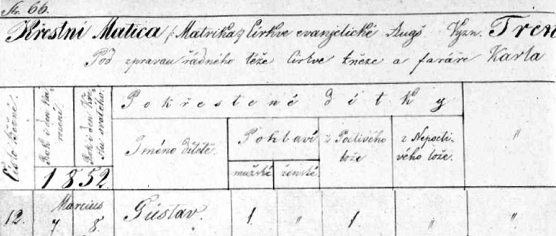
Gustáv Šándor de Szlavnica *07.03.1852 Slavnica No 10
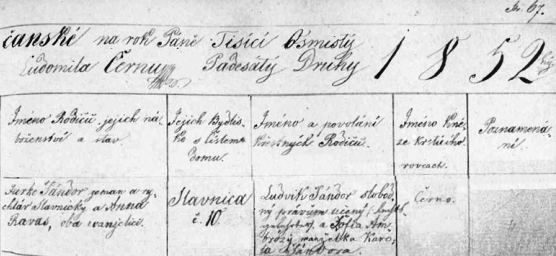
parents Jurko Šándor reeve and squire of Slavnica and Anna Ravas, both Protestants. Godparents Ludvík Šándor slobod. právum učený (.... ) and
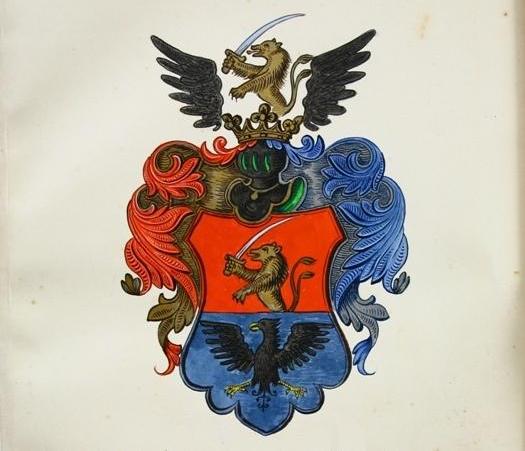
Žofia Ambrózy wife of Karol Šandor, baptism 08.03.1852. The name of the baptizing priest Karel Ludomil Černo. Until 1948, very well-known lawyers came from the family of Anna Ravas, a relative and the Ondrejkovič family.
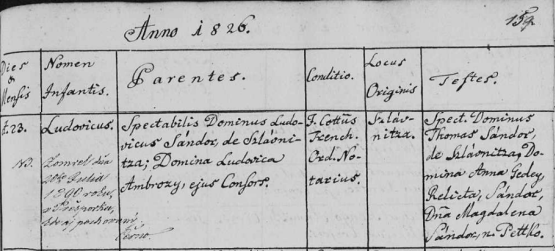
In the 1826 Ludovicus Sandor de Szlavnicza, later husband of his famous relative Berta Baroness Mednyaszky, was born in Szlávnicza. He died in the year 1890 in Pressburg, where he should be buried at the Evangelical cemetery at the Goat Gate. His wife, Berta Baroness Mednyansky, is also to be found in the tomb. The cemetery and its records are in such a state that their permanent resting place cannot be found despite the author\'s efforts.
Their son was Geyza Karel Eduard * 29.06.1858 Slavnica No. 25, parents Ludvík (Ludovicus) Šandor de Slavnica and Berta Mednyansky, Nobility and Composesors of the Slavnica. Father Evangelist AG. and mother Roman - Catholic. Baptism in Trenčín 01.09.1858. Baptismal parents Jiří Šandor de Slavnica, Composesor there and S. Miss Mednyansky Representative of absent witnesses Karel Šándor de Slavnica and Marie Royko, wife of Eduard Mednyanský de Eadem. The name of the baptizing priest Karel Ludomil Černo. Child of Cross Marriage.
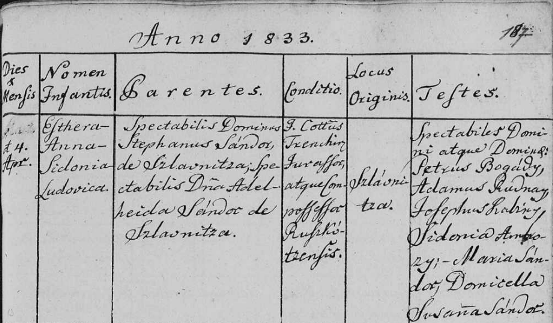
Esthera Anna Sidonia Ludovica *1833, parents Spectabilis Dominus Stephanus Emericus Sandor de Szlavnicza, Spectabilis Domina Adelheida Sandor de Szlavnicza. J. Comitatus Trenchin, Jurassor atgue Compossessor Ruskótzensis. Godparents atgue Dominus Petrus Bogády, Adamus Rudnay, Josephus Pratiny, Sidonia Ambrózy, Maria Sandor, Domicella Susana Sandor.
Real estate genus Sandor de Szlavnicza was the mansion Brunovce. A dowry he acquired Baron Mednyánszky in the 19th century (the President of the Hungarian Royal Chamber Aloisius Mednyánszky 1842-44). Relatives and confidential friend László Mednyánszky Janka Sirchich (blood relatives of the genus Sandor) was Administrator of the estate and mansion Beckov. Her brother General Béla Sirchich (*1871 †1942) after it inherited a number of pictures, which the author was Baron László Mednyánszky.
Also in the years 1862-1865, the mayor of Trenčín County was Spectabilis Dominus László Vietorisz.
Hungarian was officially allowed at the grammar school in Trenčín from 1855 from the fourth grade. Until 1867, until the Austro-Hungarian settlement, the main language of instruction was the Slovak language. From 1867, the language of instruction was Hungarian, Slovak was used as an "auxiliary language" in the lower classes.
_____3nicholaspavella.270215_224213_23.jpg)
Etellka Baroness Ivánka de Draskócz et Jordánföld, sister of a member of the Hungarian Parliament and in Budapest the dreaded duelant Oscar Ivánka. Their mutual physical and character similarity with brother Oscar with uncompromising attorney of Bratislava JUDr. Milan Ivánka is undeniable.
Following the resumption of parliamentary life in Hungary on 27 July 1867, Imre Baron Ivan de Draskócz and Jordfold was the founder of the First Danube Steamship Company, and in 1878-1891 he was the General Manager of the Northeast Railway Company. In 1882 he received the Saint Stephen\'s Order for social activities. Grandmaster of the Hungarian Freemason Lodge.
Imre Ivánka actively participated in the founding of the Hungarian Red Cross, of which he was the administrator (1881-1890).
Prvou veľkou skúškou novej organizácie bola vojna medzi Srbskom a Bulharskom (1885), keď Uhorský Červený kríž postavil v Belehrade improvizovanú nemocnicu pre 100 ranených. Ivánka organizoval jej plynulú prevádzku osobne. V tejto nemocnici pracoval aj ďalší rodák – chirurg Kovács Sebestény Endre z Pastoviec, neskorší prvý riaditeľ nemocnice v Šahách a hlavný lekár Hontianskej župy. Veľké zásluhy má Ivánka i na tom, že uhorská organizácia bola prijatá ako 25. člen do Medzinárodného Červeného kríža. Dňa 2. septembra 1884 sa zúčastnil III. medzinárodnej konferencie Červeného kríža v Ženeve, správu o činnosti Červeného kríža v Uhorsku predniesol v anglickom jazyku.
Po odstúpení župana Stefana Illesházy sa stal administrátor trenčianskej župy Alojz Mednyánszky (pokrvný príbuzný rodiny Sandor de Szlavnicza) v rokoch 1822-1835 a v rokoch 1835-1842.
Imre Sándor last surviving priest born *11.05.1772 in Vieska (defunct village in what is now Slavnicza), died † 20.04.1874 ;
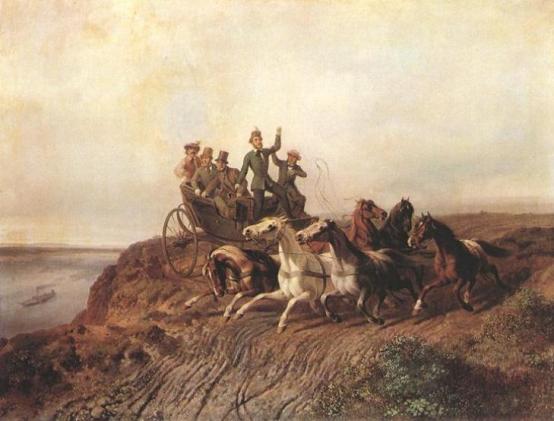
Móric Count Sandor de Szlavnicza. Development of sporting disciplines occurred in the 19th century, at the end of which culminated efforts P. de Coubertin to host the modern Olympic Games in Athens in the year 1896. Since the early 19th century sports competitions swept Europe and America. In some disciplines excelled younger members of noble families. Moricz Count Sandor de Szlavnicza husband Metternich\'s daughter Leontine, was regarded as the best rider of the day, riding. He became famous mainly dressage perfect English Melton Mowbray, where he participated in year 1833 hunt. In 1850 suffered a fall from a horse serious head injury from which is completely healed. He suffered from memory lapses with occasional hospital stays. Loyalty to the dynasty was the favorite and special guests Habsburg dynasty. Zofia Archduchess and Archduke Charles had him very excited and invited to his table. Never not interrupted if there was a shared lunch at the failure of his memory. Móric count Sándor of Szlávnicza (* 1805 † 1878), great aristocrat, popular and famous in Europe as a fine horseman, trainer and acrobat, swimmer and hunter. He sinks into madness and ends his life in a mental hospital. Son-in-law of Prince Metternich.
Trvalou, dodnes pôsobiacou zásluhou Imricha baróna Ivánku de Draskócz et Jordánföld je založenie Červeného kríža v Uhorsku. V roku 1879 bol v Budapešti založený Krajinský dobročinný spolok žien. Imre Ivánka vypracoval stanovy a bol zvolený za správcu spolku. V r.1881 „Jeho Veličenstvo” cisár František Jozef dalo súhlas k založeniu národnej organizácie Červeného kríža aj v druhej časti monarchie. Zakladajúca schôdza Červeného kríža v Uhorsku sa konala 16. mája 1881 v Budapešti. 17. mája došlo k fúzii ženského spolku s novozaloženou organizáciou Červeného kríža, Ivánka sa stal jej správcom. Napriek veku (63 rokov) sa Ivánka pustil do práce s elánom. Bol medzi iniciátormi vybudovania nemocnice Červeného kríža pre účely školenia profesionálnych a dobrovoľných sestier. Už v roku 1884 sprevádzal cisára po novej nemocnici v Budíne.
Beniczky Ferenc, Hungarian aristocrat and Intendant of the Budapest Academy of Music and the Budapest Opera, from 1888; invested as Knight Commander, 1890 Order of St. Stephen - Kingdom of Hungary.
_____k__pia_____untitledrr.190814_123204_23.jpg)
Princess Pauline von Metternich Winneburg - Countess Sandor von Szlavnicza had a very positive relationship with the family of his father, his ancestors and regions where they came from. In an effort to uplift the cultural and economic level selflessly focused a considerable amount of financial resources, together with the entrepreneur Sinay completed the spa Trenčianske Teplice.
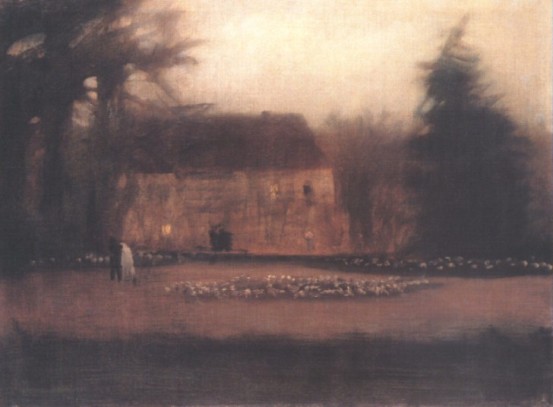
Shadow memories are lost in the mists of time. Baron László Mednyánszky childhood spent in the Beckov. His paintings familiar sadness for a falling irretrievably into the past of his social class. The biggest loss of its status experienced Mednyászky generation. So I understand only its members.
Esthera Sandor Szlavniczai * 04. April 1833 † 31. January 1895. Her husband was Baron János Mednyánszky. Her brother-in-law were District Notary Stephanus I. Ondrejkovič and Freiherr Lajos Sandor de Szlavnicza, whose wife was Baroness Berta Mednyanszky, sister of János Mednyánszky.
Grand Master Imre Baron Ivánka died suddenly on July 27, 1896 in his resort (Besenyő). The Red Cross delegation led by the Hungarian Minister of Agriculture also attended the funeral. The work of Imre Baron Ivánek left a permanent foundation in the life of the Red Cross.
At the end of the century, only religion was taught Slovak at the grammar school in Trenčín. The changes also affected Jewish students for whom German was their mother tongue.
In the 17th - 19th century, the village of Malé Chyndice belonged to the noble families Bujník, Dežerický, Sandor de Szlavnicza and others.
In the years 1892-1905, the Roman Catholic priest in Liptovský Ján was a blood relative of the Szlavniczai family, Zsigmond Platthy.
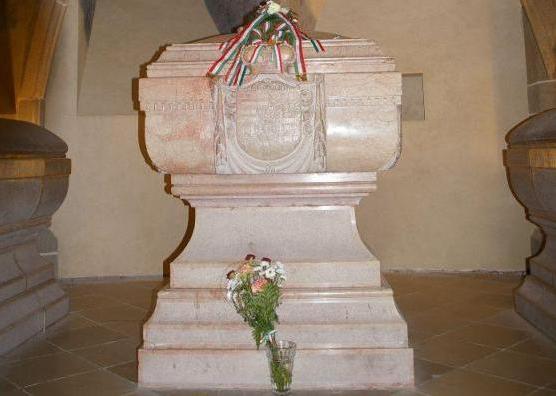
The remains of his wife Ilona Zrinyi (Helena Zrinski) and her son Ferencz II. Rákoczi in 1906 the Ottoman Empire decided to ride to the Košice.
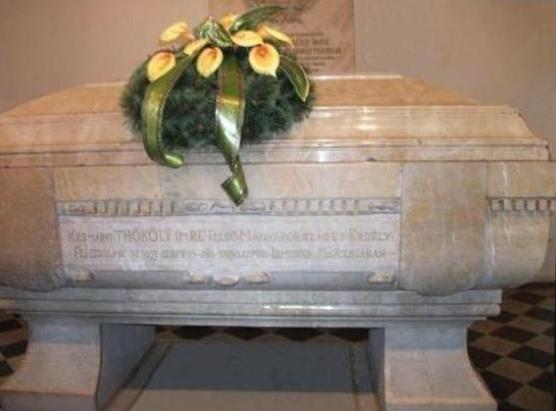
In 1906 was transferred remains Transylvanian prince Imre Thököly de Kesmarkium of Izmit in the Ottoman Empire in Kežmarok and stored in the Mausoleum of the New Lutheran church.
indafoto.hu/magyarmesszer: Captain Joseph Freiherr Sandor von Slavnicza performed military service by a professional officer K.u.K. in Transylvania in Mezőhegyes. According to the memories of Captain Czechoslovak Legions in France Jozef Honza (Dubnický), a native of Chtelnice (the village was originally the property of the family Erdödy, family and compossessorate closely tied to the family of Sandor von Savnicza) convinced him to emigrate to the US February 11, 1907 his commander Captain Jozef Sandor von Slavnicza and noble descent: “I rarely politicize, never serve. He gave him arguments about the necessity of the collapse of the Austro-Hungarian monarchy. I advise you to emigrate to America as soon as your military service is over. I give you some advice that you will be grateful for in the future ”. The young national traveled to the United States and joined emigrant circles to talk about the future of the non-Hungarian nations in the Austro-Hungarian monarchy and the impossibility of staying together with the Hungarians. Source: PhDr. Ferdinand Vrábel "Notes of the Legionary".
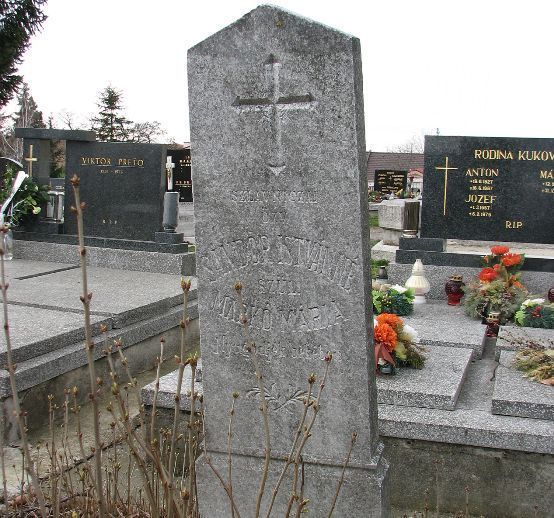
The Headstone of noble Lady Maria Sandor de Szlavnicza genus. Marko in the Veľké Bielice. Forever left this world on 10.03.1907 in the Malé Bielice.
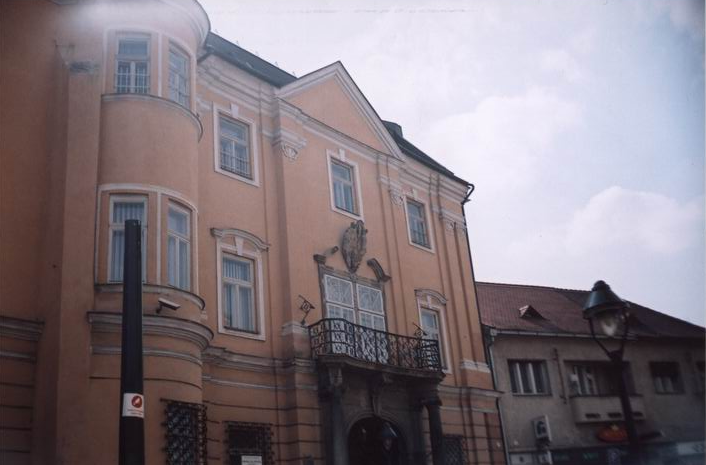
The county palace in which the deputy of the Trencin County SPECTABILIS AC PERILLUSTRIS DOMINUS was resident Gaspar Sandor de Szlavnicza and His Honor Trencin County Judge SPECTABILIS AC PERILLUSTRIS DOMINUS Stephanus Sandor de Szlavnicza. Today a museum.
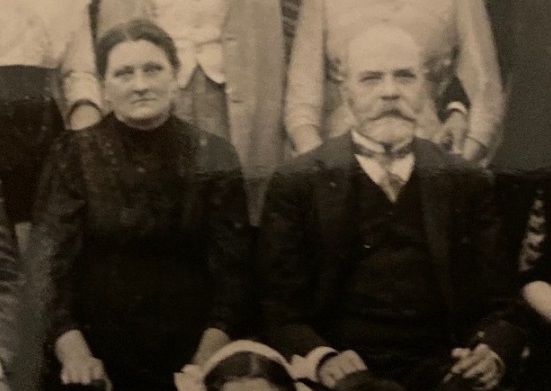
Spectabili Domina Anna Sandor de Szlavnicza, daughter of His Honor Trenčín County Judge High Born Stephen Sandor de Szlavnicza and her esteemed husband District Notary D. Stephan I. Ondrejkovič in a picture from the year 1912 (v trenčianskej župe najúspešnejší organizátor volieb do jej zastupiteľstva)
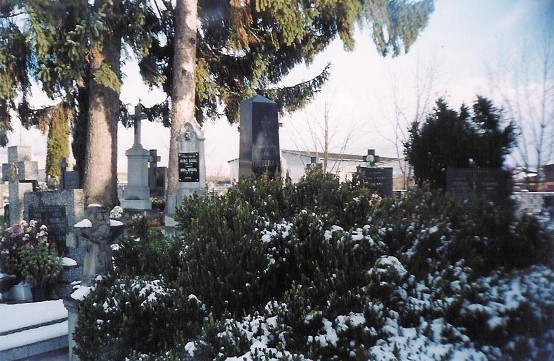
The tombstone of the Noble Mrs. Anna Sandor de Szlavnicza (Szlavniczai) married Ondrejkovičová in the peasant village Dolné Držkovce, district Bánovce nad Bebravou.
Lawyer JUDr. Milan Ivánka de Draskócz et Jordánföld Member of the SNR and signatory of the Martin Declaration of 30 October 1918.
On October 31, 1918, at the planned autumn meeting of the municipal committee of Trenčín County, the last Austro-Hungarian coming, Ladislav Baron of Mednyánszky de Medné, acquainted the county assembly with the Martin Declaration, with which Karol Štúr had previously informed him.
A relative and intimate friend of Baron Ladislav Mednyánszky Janka Sirchich (a blood relative of the Sandor family) was the administrator of the Beckov manor and manor house. Her brother, Lieutenant General Béla Sirchich (* 1871 † 1942), inherited from her a number of paintings by Ladislav Baron Mednyánszky.
The end of the episcopal ownership of the village of Lukáčovce dates back to the 1920s, when a major land reform took place.
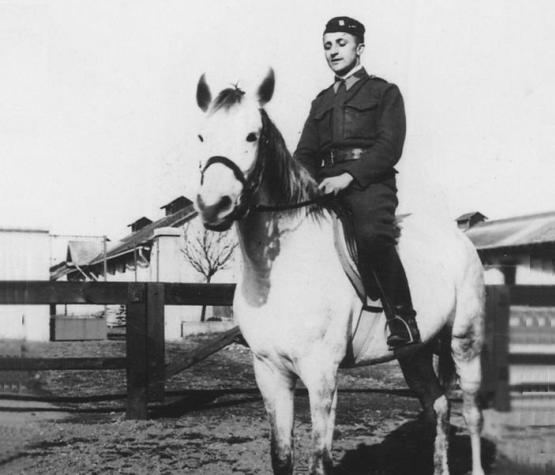
The family tradition continued service in the 8th Dragon regiment St. Wenceslaus in Pardubice and 11th Dragon Regiment King Carol II of Romania in Bratislava Lt. cavalary, later Colonel tank. Aladár II. Ondrejkovič, grandson of Anna Sandor de Szlavnicza and District notary Stefan I. Ondrejkovič.
Ján Mihalovics (1877-1939), a native Prievidza contributed to the development of mining education in Slovakia. He attended high school in Nitra and Bratislava, Budapest and law in mining at the Academy of Mining and Forestry in Banská Štiavnica. He worked as a university teacher, since 1934 a university professor. He lectured at the Academy of Mining and Forestry in Banská Štiavnica. In 1919 he moved to Sopron. He studied the history of mining in Slovakia and the Mining Academy in Banská Štiavnica. I.a. to Hungarian translation of the work of mining. Roman Catholic priest in the Low Tatras was 1892-1905 Sigismund Platthy.
After World War II, the rest of the episcopal estates in the village of Lukáčovce were nationalized.
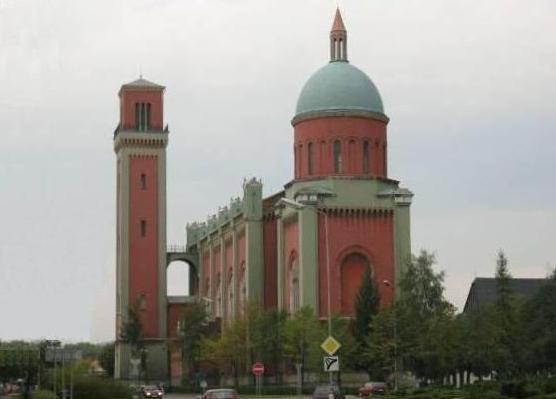
The author of the mausoleum of the Transylvania Prince Imre Thokoly, visited the New Evangelical Church between 1982-1990. On that occasion, he remembered not only his famous relative, but also a close friend of his family, the Chief of the District of Kezmarok, Dr. Alex Lutšek, the brother-in-law of General M. R. Štefánik. In spring 1944 the the brother in law of General M. R. Štefánik and the public notary in Spišská Nová Ves JUDr. Ladislav Štefánik, Dr. Alexander Lutšek granted Kežmarok asylum not only to the newlyweds First lieutenant of reserve Aladár II. Ondrejkovič and Alžbeta Ličková, but also to the mother of bride Julia Ličková\'s native Stiglitz. Family unions are Sándor de Slávnica connected with the most important families of the former Hungary. Among their spouses and grandchildren are also members of the families Perényi, Thurzo, Zrinski, Hunyady, Mednyánszky, Erdoda, Thökoly, Forgách, Mariássy, Draškovič, Zsapáry, Károly, Keglevich, Ivánka, Révay, Szirmai.

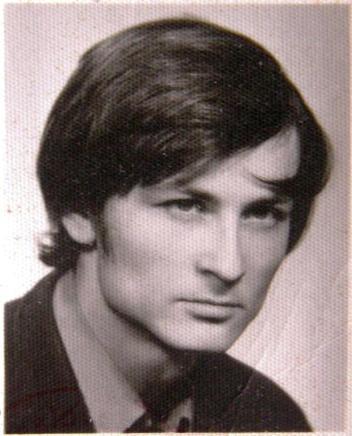
Pavel Ondrejkovič, great-grandson of the Noble Lord Stephan Sandor de Szlavnicz (comitatus Trentsiniensis jurassor) and great-grandson of the District Notary Stefan I. Ondrejkovič and Sp. Domina Anna Sandor de Szlavnicza.
The family ties are the Sándors connected with the most important families of the former Hungary. Among their wives and husbands and grandsons we also find members of the families Perényi, Thurzo, Zrinski, Hunyady, Mednyánszky, Erdödy, Thökoly, Forgách, Mariássy, Draškovič, Zsapáry, Károly, Keglevich, Ivánka, Révay, Radvanszky, Beniczky, Szirmay.
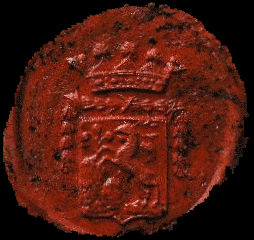
Sources: Mária Turbová; Lt. col. tank in rest Aladár II Ondrejkovič; Militär-Schematismus der österreichischen Kaiserthumes Periodical Page, Volume: 1864, Page 1036; Gejza Turba; Národné noviny Volume: 1933, Issue: 08.12.1933; National newspaper 26.05.1928 / 2; MI SR - State Archive in Nitra Ivanka near Nitra; Cardinal Ján Chrizostom Korec 19.01.2001 Bratislava; Mrs. Alica Ličková; Mgr. Peter Múčka Partizánske; Mr Peter Petrulák; PhDr. Ferdinand Vrábel;
Notes: Gáspár IV Sándor (hu) (décédé vers 1723), beau-frère et partisan de Imre Thököly, il est l\'un de ses principaux généraux kuruc (1693-1694). Ambassadeur Kuruc, capitaine de la Cour (udvari kapitánya). Soutient de l\'empereur par la suite qui le gratifie du titre de baron (1706) et de Gentilhomme du roi. Père du précédent ; From 1850, Colonel Imre, Baron Ivánka de Draskócz et Jordánföld, was imprisoned in a military prison for officers in Hradec Králové. His relative, Captain Aladár Ondrejkovič, was imprisoned in the same prison in 1950 ;
Arbre généalogique ; Ivanka Imre *15 nov.1745 Draskóc Túróc, †10 feb.1813 Kiszellő, son of János Ivánka and Eszter Koncsek dvoreczi. Husband of Zsusana Gedey ; Lt. Pál Bélaváry of Royal Hungarian Air Force Bf 109 G-6 W.Nr. 95 417 "Fehér 6", "V8+47", 101/.3 Vadaszszázad, Veszprém, August 1944 ;
.... vicecomes and other persons in the capital administration appear in the following sources. We have found it in this sense since the 1960s. when indicating the location of specific property in the Zvolen countryside. 326 The term comitatus originally referred to a place or region outside the city, i. village. Along with the naming of the territory of the seat, the designation was later extended to the office of the same name. 327 Later, the meaning of the word narrowed when the countryside began to refer only to the area with rural settlements. Inertia in the use of land shaped the conditions in the region in the countryside and in cities until the period of the beginning of industry in the 19th century. 326 R. 1564 „ponewass sem ya ... founded Dubi in the village of Zwolensk ... and from here ... he founded Kremnica named there in the village of Zwolensk with all the benefits: mountains, waters and yakiss, whatever the benefits were. “SEDLÁK, F. (ed.): Slovak letters and nudes from the 16th century in the archives of the Rakovský family. In: Linguistic Studies VI. (hereinafter Listy Rakovských) 1961, p. 234,. 11. R. 1566 „Mr. Ferencz Radwansky vice chairman of Swolenskey ... born Balassa Rakonczy and Ferencz Krtyssy wiedieczky dworsky and assesor tehoz wiedieka.“ MOL, P 46, Beniczky család (hereinafter Beniczky), I. télel, 1. csomó, évr . 1566. 327 MAJTÁN, M. (ed.): Historical dictionary of the Slovak languagea VI. (hereinafter HSlJ, vol. I.-VII., Bratislava: Science. Publisher of the Slovak Academy of Sciences, 1991 - 2008), p. 359-360.
Pedigree ;
_svg.260512_195117_23.png)



 back
back 
